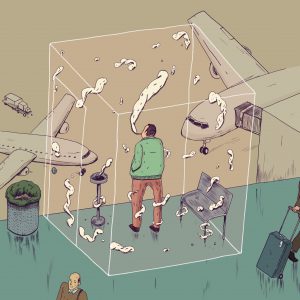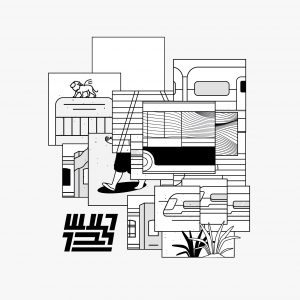Archive

The Other Side
Underpass
Yitzhak Navon railway station

Edges
The Gallery at Jaffa 17
Jaffa St. 17

The Jerusalemite Petting Zoo
Azrieli Gallery’s windows
Ha-Nevi'im St 39

Living Strata
‘New Spirit’ House (Old ‘Shaare Zedek’ Hospital)
Jaffa St 161

Craftsmen on the Streets
Jerusalem Light Rail stations on Jaffa St
Central Station, Ha-Turim, Mahane Yehuda and City Hall

Rerun
‘New Spirit’ House (Old ‘Shaare Zedek’ Hospital)
Jaffa St 161

Waiting Room
‘New Spirit’ House (Old ‘Shaare Zedek’ Hospital)
Jaffa St 161

Vegetable Patch
Saidoff windows
155 Jaffa St

A Hand Me Down
Printed Magazine. Sold in the store '24/9' Shlomo Hamelech 9

Once a Tree in the Forest
Beita Gallery
155 Jaffa St

Passing Through
Saidoff windows
155 Jaffa St

Fifteen Melodies to the Abyss
‘New Spirit’ House (Old ‘Shaare Zedek’ Hospital)
Jaffa St 161

Pollack Art (Layers in Time)
'Art Shelter' Galley
Yehuda HaMaccabi St 7

Back to the Future
New Spirit’ House (Old ‘Shaare Zedek’ Hospital)
Jaffa St 161

What is More Yellow or an Elephant?
'Beit Hansen' Gallery
Accessible entrance: Dubnov St 2 Main entrance: Gdalyahu Alon 14

White Noise
‘Hutzot- Public Art Gallery’
Jaffa st 17

Follow the Sun to Israel – Illustrated Tribute to Shmuel Katz
New Spirit’ House (Old ‘Shaare Zedek’ Hospital)
Jaffa St 161

Lost
New Spirit’ House (Old ‘Shaare Zedek’ Hospital)
Jaffa St 161

Open Rehearsal
'Beita' Gallery
155 Jaffa St
Errors and Omissions Excepted
Saidoff windows
Jaffa St 155

Time after Time
Underpass -'Yitzhak Navon' railway station

Behavioral Patterns
New Spirit’ House (Old ‘Shaare Zedek’ Hospital)
Jaffa St 161

The ABC of Eliezer Ben Yehuda
Safra square

Layer Cake
'Azrieli' Gallery’s windows Ha-Nevi'im St 39
